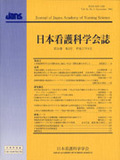Japanese
English
- 販売していません
- Abstract 文献概要
- 参考文献 Reference
- サイト内被引用 Cited by
要旨
日本人の死別悲嘆に関する記述集の内容を分析し, 悲嘆反応を確認していくことを目的とした.
方法: アクションリサーチに基づき悲嘆回復ワークショップを企画し主題に取り組んだ. プログラムの一つである G-TST (Grief Twenty-Statement Test) により収集された484記述の意味論的内容分析を実施した. 対象は, 配偶者, 子ども, 親の喪失との死別に起因する苦痛軽減を望んでワークショップに参加した52名である. 死別後の経過は約 22.7月であった.
結果: 悲嘆反応は, 心的反応, 行動反応, 身体反応の3コアであり, さらに心的反応は多岐にわたり「気分不調: 気分の低下と変調」「思慕: 日常生活に生きる故人」「奮励: 現実と向き合う」の3サブカテゴリーからなった. 思慕の表現の多さと多彩さと, 故人の記憶を包み込むように保持する点に日本人の特徴があると考えられた.
Abstract
The aim of this study is to clarify precisely the actual status of Japanese bereavement reactions using the Action Research Method. The descriptive data (“Grief Twenty-Statement Test: G-TST”) were collected at grief recovery workshops, which had been held to assist bereaved persons. The Semantic Contents Analysis Approach was used to analyze 484 statements, which were gathered from 52 subjects who had lost either spouse, child or parent within 2 years. Participant observation over the term of workshops was also helpful for understanding the descriptive data.
Results: The descriptive data fell into the three core reaction categories: psychological, behavioral and somatic. Furthermore the psychological category consisted of 3 sub-categories. They were “mood changes”, “reminiscences” and “facing reality”. From the analysis of the extensive data contained in the “reminiscences” sub-category, it can be seen that the Japanese continue to cherish reminiscences deeply.
Copyright © 2005, Japan Academy of Nursing Science. All rights reserved.


